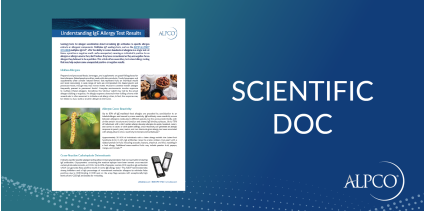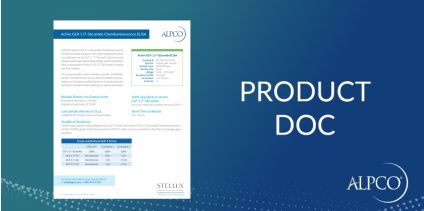25-OH Free Vitamin D ELISA
The 25-OH Free Vitamin D ELISA is a quantitative immunoassay for the determination of the concentration of free 25-OH vitamin D in human serum.
Features:
- Includes standards and controls
- Easy-to-use ELISA format
- Incubation time under 3 hours
Research Use Only. Not for Use in Diagnostic Procedures.
Nearly all circulating 25-OH Vitamin D in serum is bound to Vitamin D Binding Protein (88%) and Albumin (12%). Vitamin D Binding Protein (DBP) is a major component of serum, with a concentration of 250-400 mg/L of serum. Only a small portion, about 2%, of the Vitamin D binding sites of DBP is occupied. A very small fraction, approximately 0.04% of the 25(OH)Vitamin D, circulates in the free, non-protein bound form (1).
The concentration of DBP is not constant and can be influenced by factors including obesity (2) pregnancy (3), the use of oral contraceptives (4) and liver disease (5). Variations in the concentration of DBP in serum will affect the unbound fraction 25-OH Vitamin D.
For thyroid and steroid hormones it has been shown that their in vivo physiological activity correlates better with the free, non-protein bound fraction, than with the total concentration of the hormone in plasma. In such conditions the measurement of the concentration of the free circulating hormone provides more physiologically relevant information. This notion is known as the “free hormone hypothesis” (6). Particularly in situations in which the level of binding proteins is elevated or decreased, the measurement of total circulating hormone may lead to a wrong diagnosis. The bioavailability of 25-OH Vitamin D may be more complex, since it is a precursor that is metabolized in the kidney to the active 1,25(OH)2 Vitamin D. However, literature data suggest a role for the measurement of free 25-OH Vitamin D (7-10).
The 25-OH Free Vitamin D ELISA makes it possible to measure the concentration of freely circulating 25-OH Free Vitamin D ELISA in serum.
References
Kane et al (2013) Vitamin D3 effects on lipids differ in statin and nonstatin treated humans: superiority of free 25-OH D levels in detecting relationships. J Clin Endocrin Metab. 98(11):4400-9.







